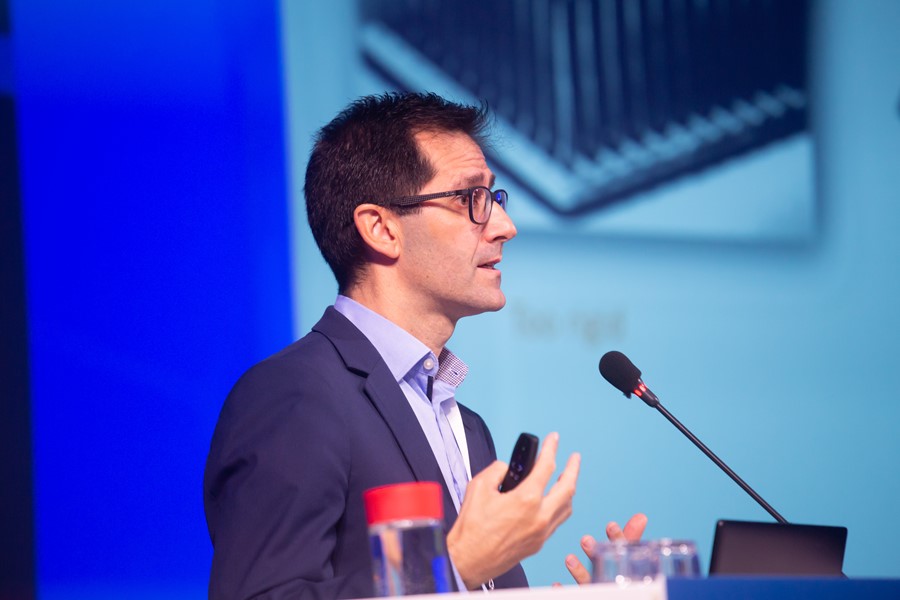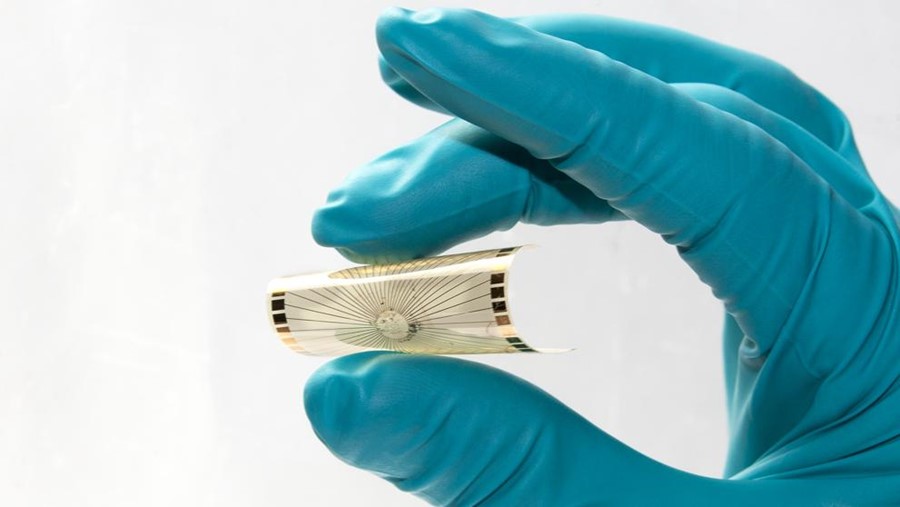Jose A. Garrido’s vision: graphene bioelectronic eye implants
Graphene Flagship researcher Jose A. Garrido reveals his gameplan to bring graphene-based bioelectronic retinal implants to the forefront of medicine
Jose A. Garrido is an ICREA Research Professor and leader of the Advanced Electronic Materials and Devices group at Graphene Flagship partner ICN2, in Barcelona. He is also the Deputy Leader of the Graphene Flagship's Biomedical Technologies Work Package, and he has a vision: a world in which doctors can cure diseases and disabilities using biomedical implants enabled by novel electronic materials like graphene.
His pioneering work on graphene-enabled retinal implants, which aim to provide artificial vision to patients with retinal degeneration, is internationally recognised – Garrido and his collaborators have recently been awarded a €1 million grant by the la Caixa Foundation to fund their research. He plans to use the money to enable an ambitious three-year project to design the next generation of retinal prostheses using graphene-based electrodes.
I spoke with Garrido at the Graphene Connect event in Barcelona, this November, and gained some fantastic insights into the work he's doing and his ideas for the future of medical bioelectronic devices.
What motivated you to start working on retinal implants?
In general, I'm very interested in merging electronics with biology to solve health problems. It started before trying to solve vision problems – in general, I've always been interested in how we could use electronics to help patients. But years ago, some people I was working with in France made me start thinking about the problem of blindness, and how it affects people. I thought that this would be a good bench test for our technologies, and a great platform for me to try to understand the challenges of restoring vision. I wanted to investigate how graphene electronics could solve these challenges.
Why use graphene?
Well, firstly, I started with other materials. Years ago, I was working with materials that are also chemically resistant, such as semiconductors like gallium nitride, and then I moved to diamond because it was stable as well. However, for each of these materials, we always had some sort of trouble! Either the flexibility was a problem, the material was not sensitive enough, or we couldn't inject sufficient charge. But when graphene came, everything changed. The fact is, we haven't found a reason not to work with graphene yet. It has a combination of properties that make it very attractive.
What makes graphene so good for biomedical devices?
Firstly, for this application, I believe the ability to integrate graphene with flexible technologies is the most important. You need to integrate it into a flexible substrate and do all the fabrication and microfabrication required to produce your device.
It also needs to be able to interface with the nervous system, to stimulate and to monitor electrical activity. In order to have a proper interface with the nervous system, you can't just have either recording or simulation. You need both to enable bidirectional communication. So far, graphene is very good at stimulating and recording nervous tissue. We can easily integrate it into flexible substrates, and it's a durable material when exposed to a harsh environment.
Could you explain to me how the retinal implants function in layman's terms?
We're trying to help patients who have degenerated photoreceptors. This happens in several neurodegenerative diseases such as retinitis pigmentosa or age-related macular degeneration. But this degeneration does not mean that the whole retina is degenerated. There are some parts of the retina that are still intact, and those are still connected to the optical nerve.
One solution is to have photoreceptors which stimulate the intact part of the retina, and then transfer that information through the optical nerve to the visual cortex.
We're taking a different approach. We don't use the photoreceptors – instead, we plan to implant an array of graphene-based electrodes on the retina. These electrodes mimic photoreceptor stimulation with an electrical impulse. It works like this: an image is captured with an external camera, then this information is sent wirelessly to the implant, received in the form of pulses applied to each of the electrodes on the implant. This effectively copies the function of the photoreceptors and should allow the patient to see a pixelated image.
What would you say are the challenges going forward?
When it comes to integrating graphene, we're at a pre-industrial level. But over the last four years, thanks to the Graphene Flagship, among other projects, we've gone from being research-orientated to actually applying that research. We have pre-industrial device prototypes, and we do fabrication in cleanrooms – the same cleanrooms we use for research. For me, I think that that integration and demonstration of the prototypes is not the challenge. The challenge is industrialisation.
How can we jump from what we do in a pre-industrial cleanroom to large-scale fabrication? Who is going to mass-produce these technologies? Right now, there's no one in Europe who can do this type of production on such a large scale, with the required levels of standardisation.
That's the main challenge for a lot of applications of graphene, and we're all suffering from the same problems. The Graphene Flagship have now realised this, and that's why they have launched the Standardisation and Validation services, and will soon launch the Experimental Pilot Line. This is a very important effort, but it will have to be matched by industry.
What ultimately led to you being awarded the grant?
Competition was very tough, I can tell you! They really valued the multidisciplinary team that we put together – it's really unique to have such a strong team with such different backgrounds, sharing the costs and responsibilities. Each of us was an expert in our field, and we just really wanted to work together. Experts in optical imaging were from ICFO, experts in electronics and ASIC design came from IFAE, clinicians were from the Barraquer Foundation, and the Paris Vision Institute provided experts in retina electrophysiology.
How are you going to use the €1 million grant?
We need to develop some understanding of the challenges. The challenges are not only at the interface with the tissue – there are challenges with the wireless transmission, with the design of the specialized chip controlling the whole system, and with the powering of the device. How do you power a device that small?
This grant is going to be crucial to bring together such a multidisciplinary team. A team that knows about optics, wireless transmission, neural interfaces, materials science and biology. Of course, we're going to divide the pie into many pieces. But we hope that when we put these pieces together, the project will be a great success.
Finally, where do you see graphene-enabled retinal implants in 10 years?
In 10 years, the project should be a commercial success! I think that in just three years, we should have demonstrated some of the hypotheses that we are proposing now. Without doubt, there's a huge amount of work to be done if we want to help patients to recover part of their lost vision, not to mention the promise of a complete recovery – but our technology will also lead to significant improvements in many other fields where medical neural implants are currently used, including brain surgery, epilepsy monitoring, and movement disorders such as Parkinson's disease.


Graphene-enabled electrodes mimic photoreceptor stimulation with an electrical impulse (Credit: ICN2).




